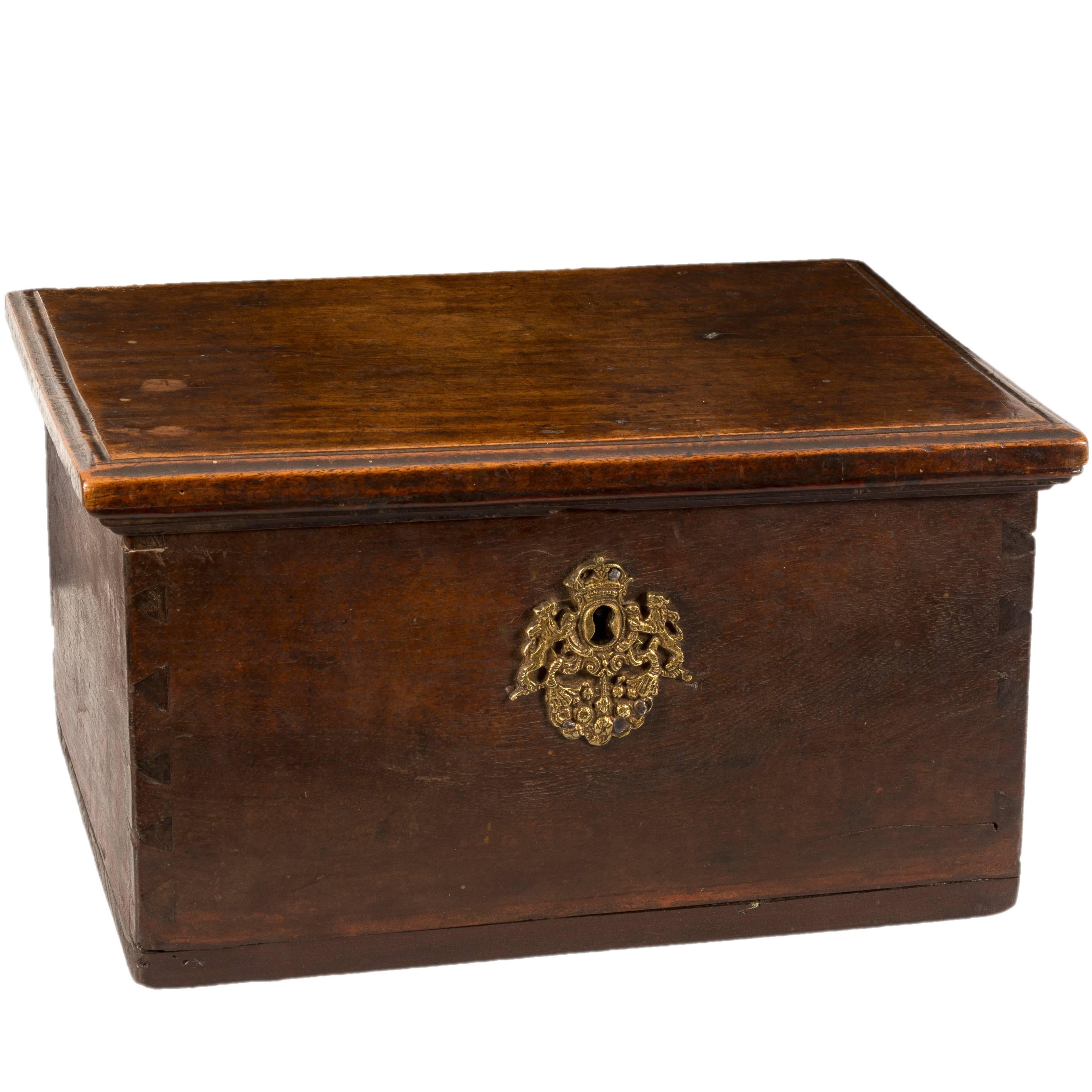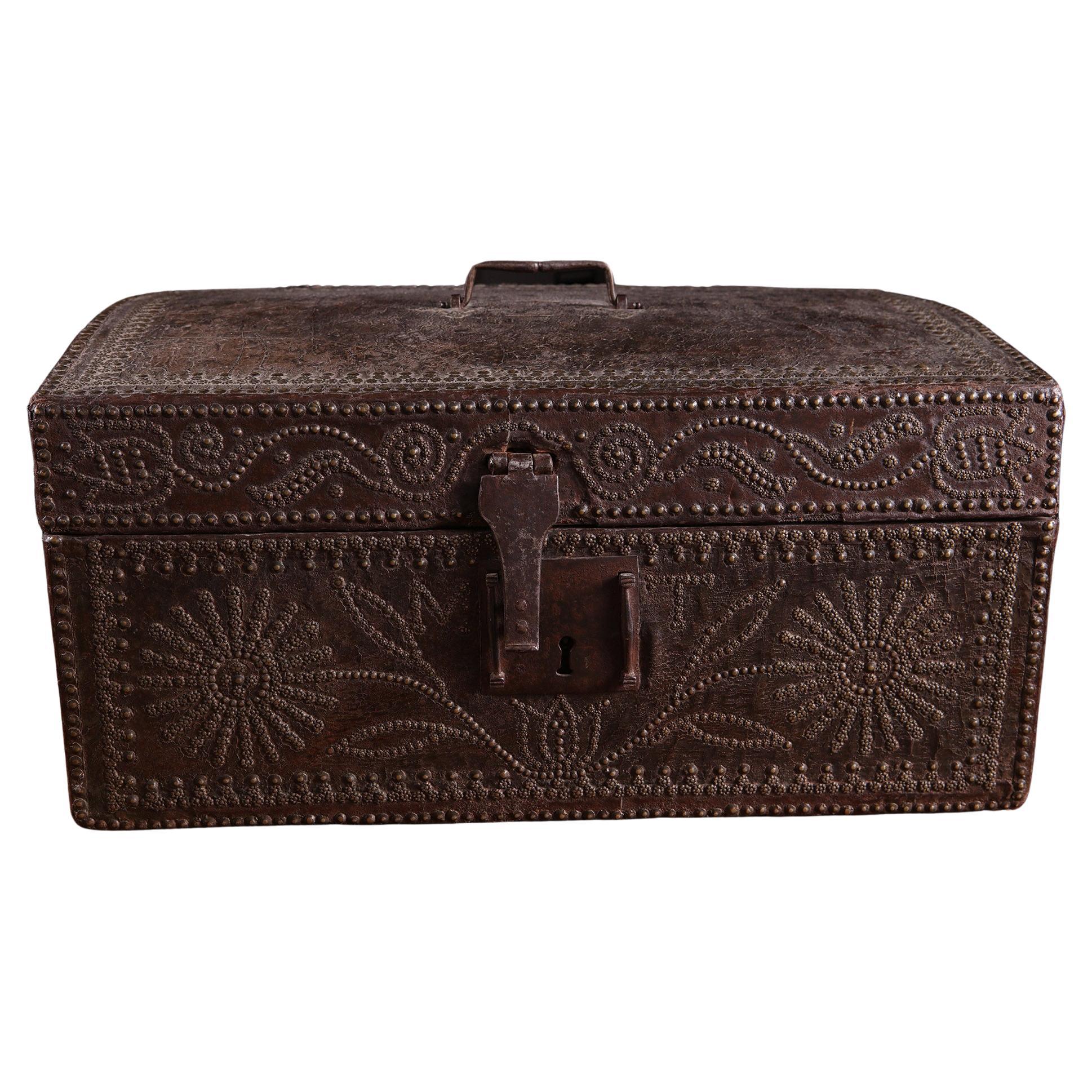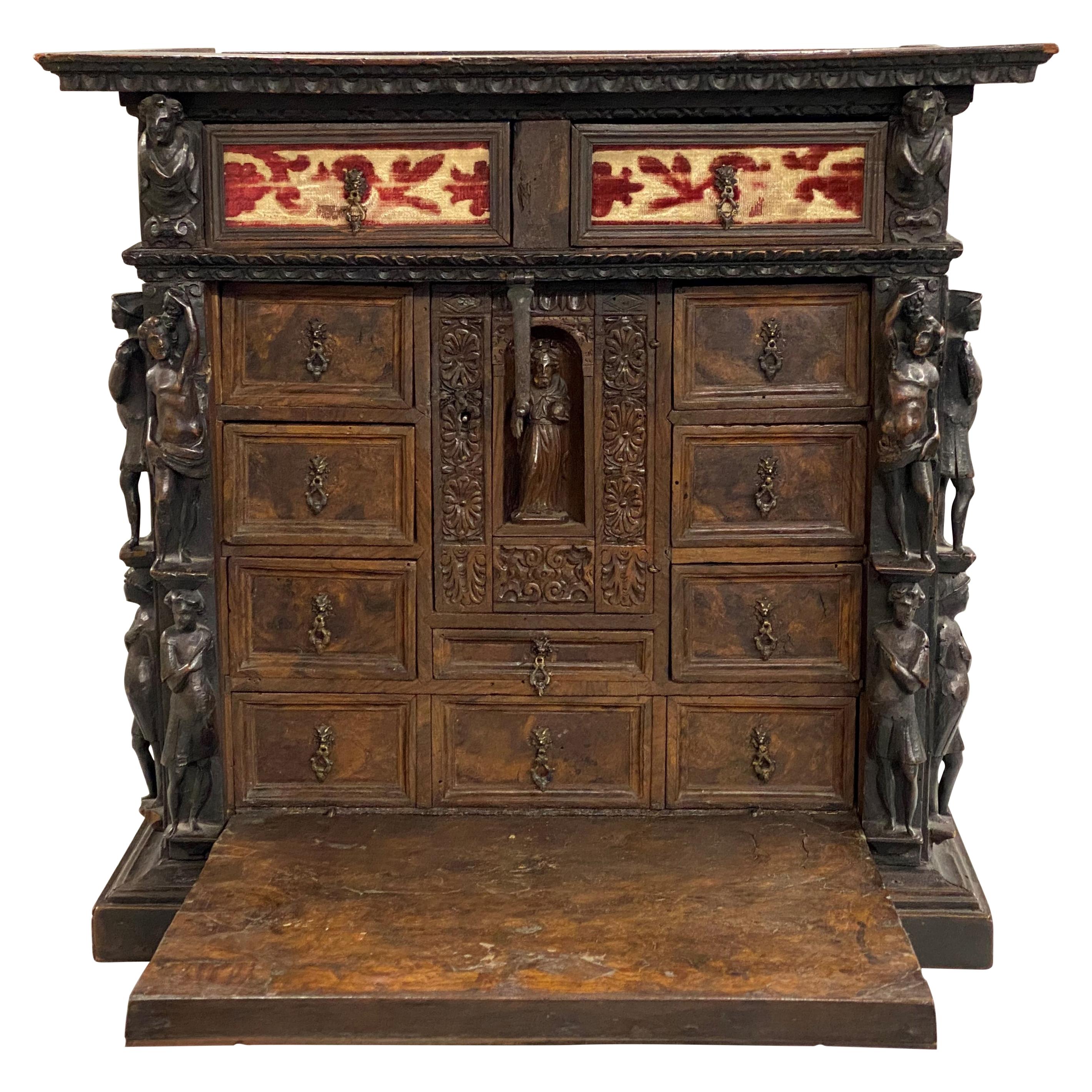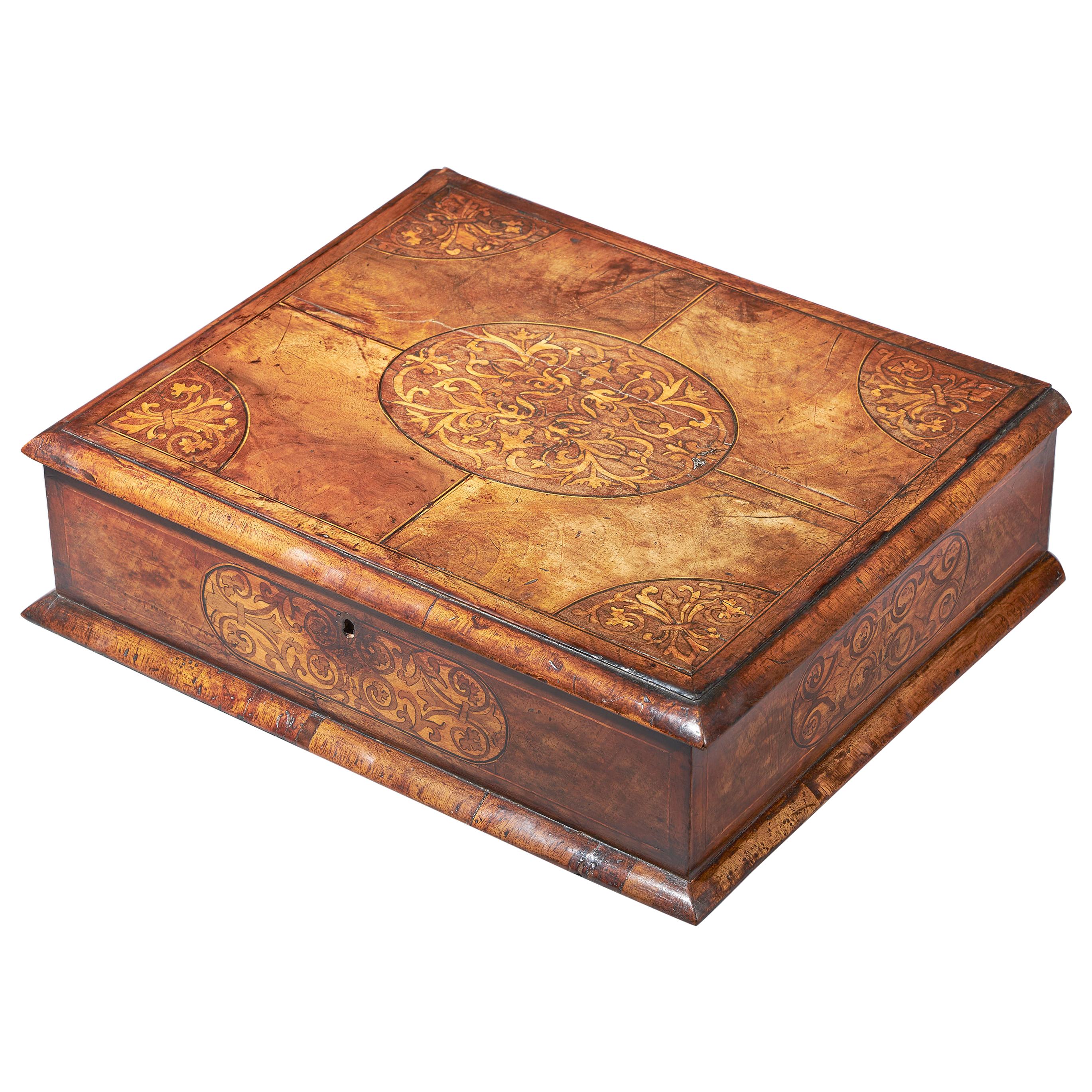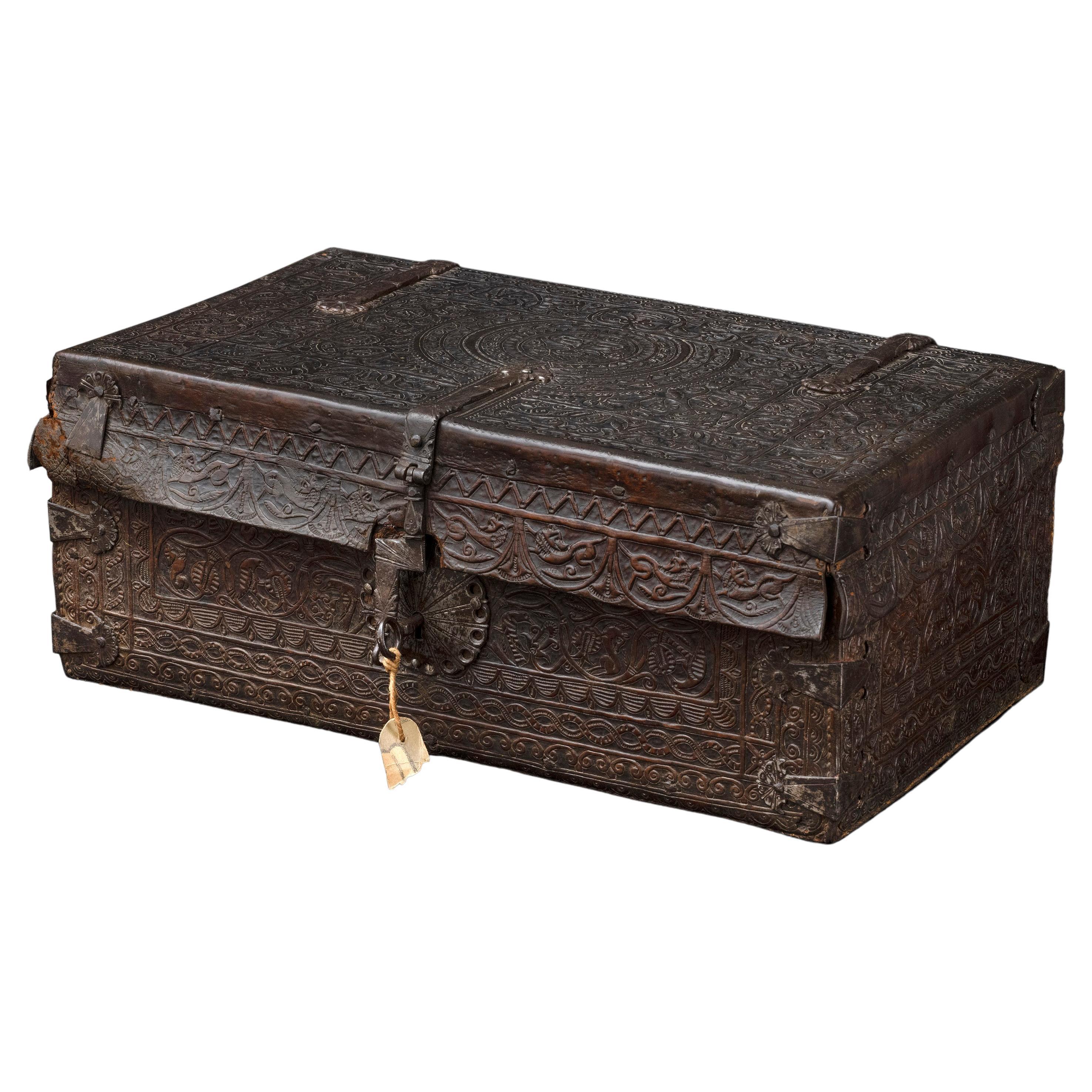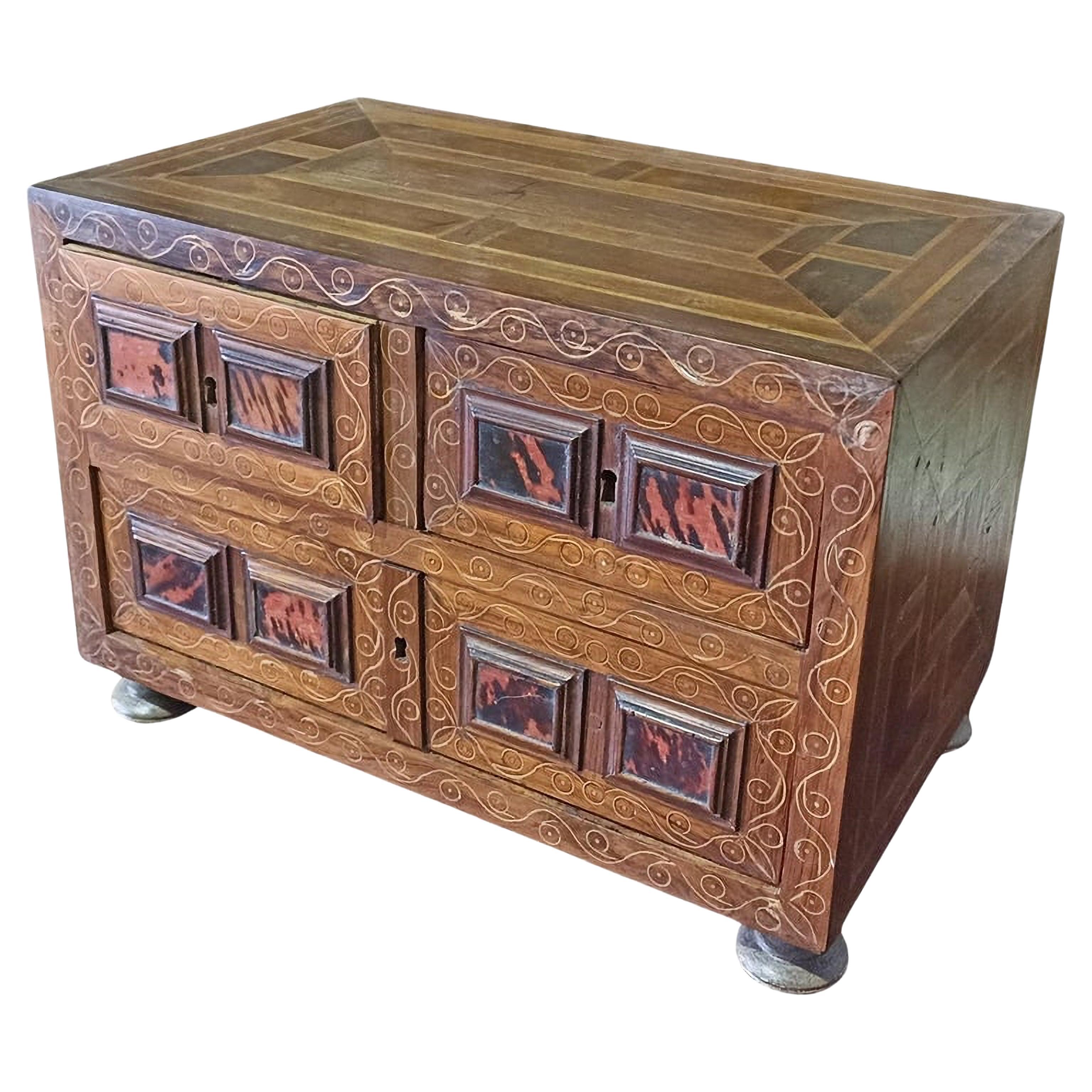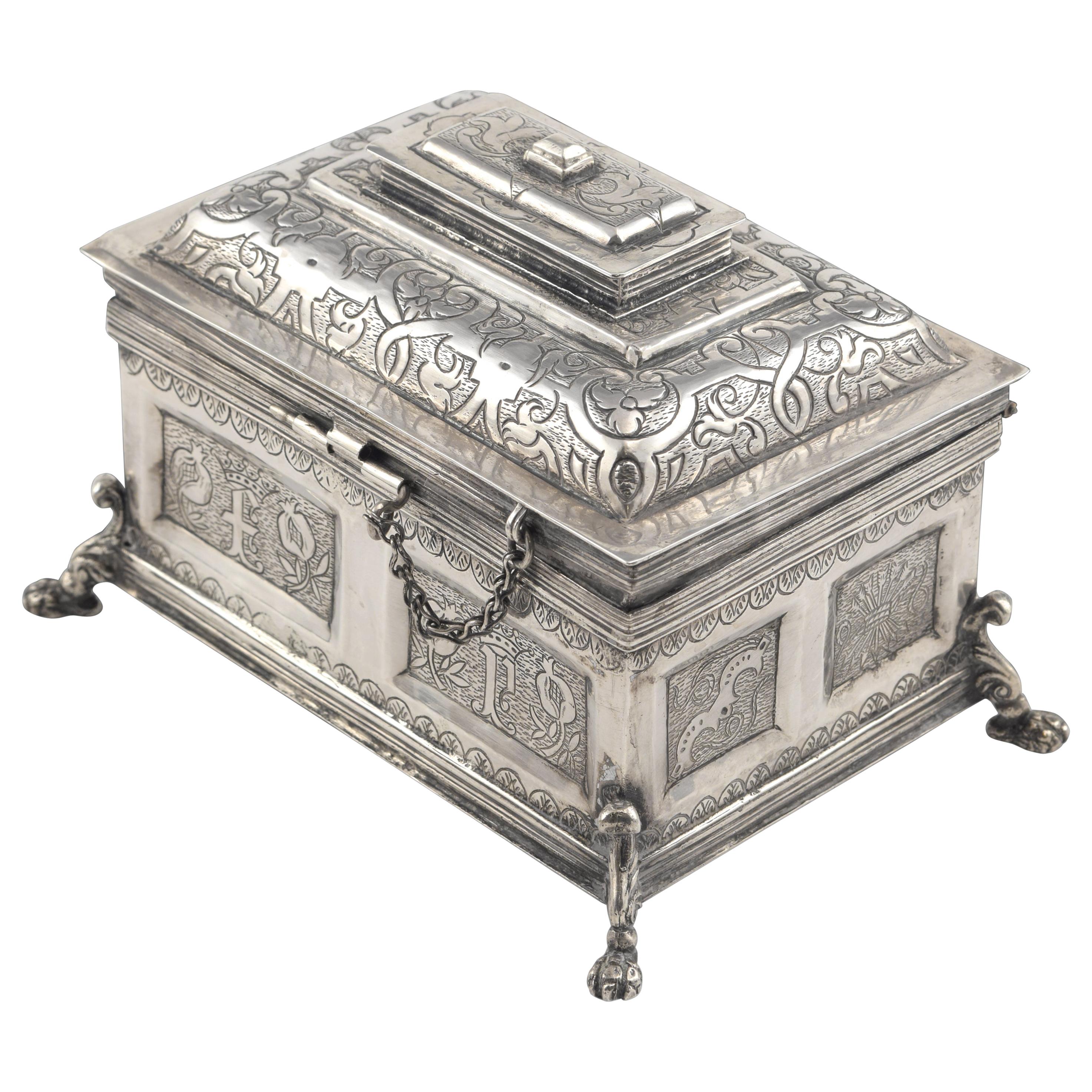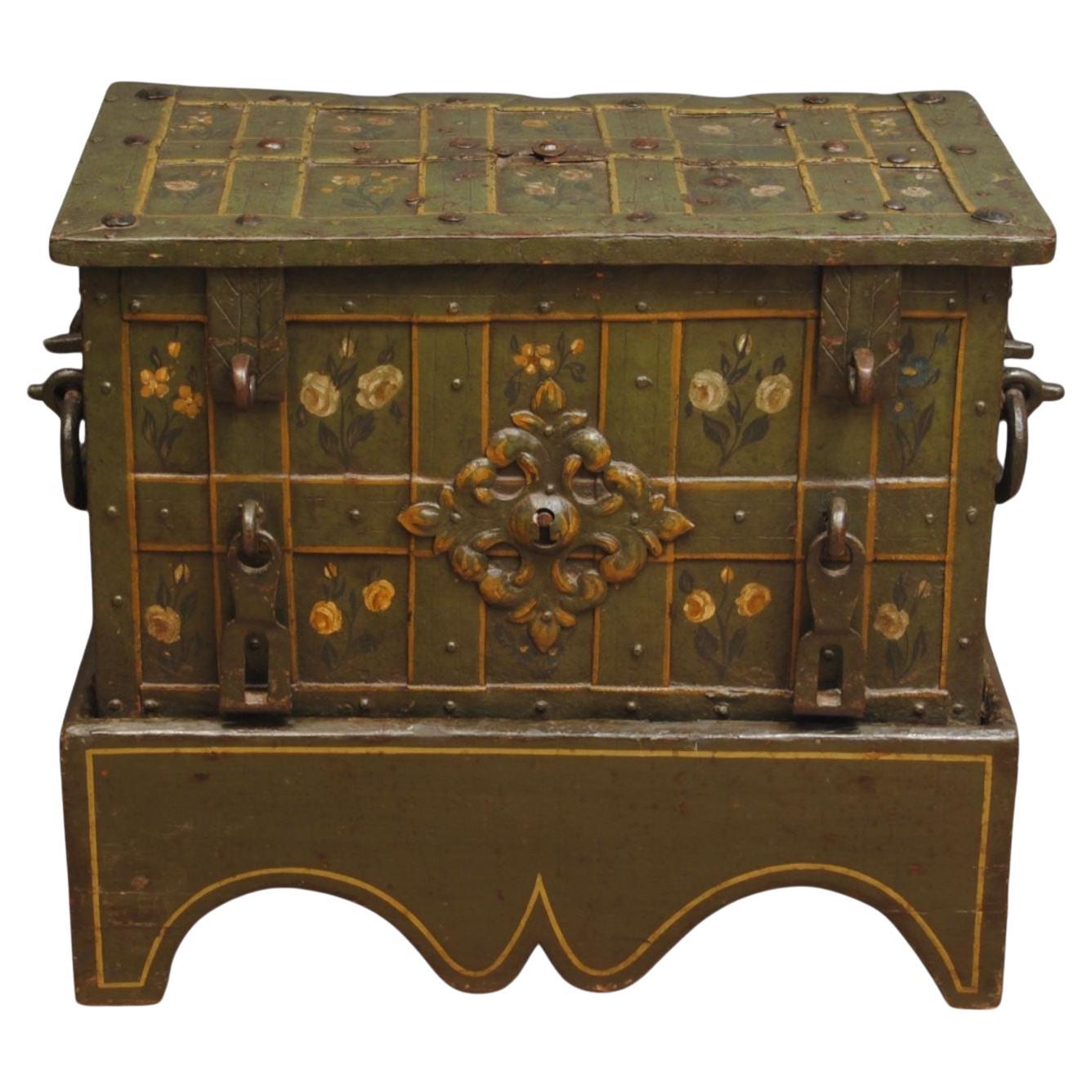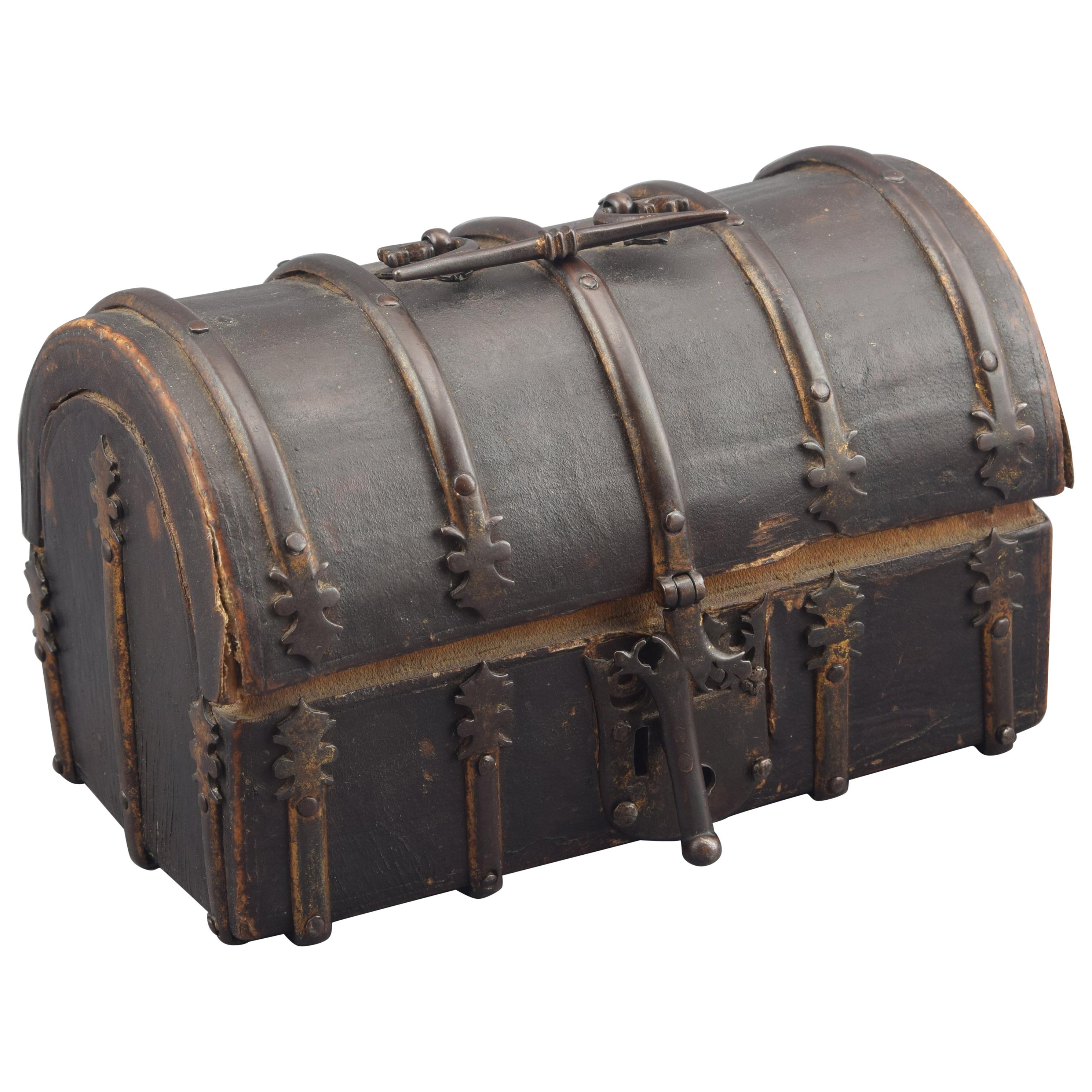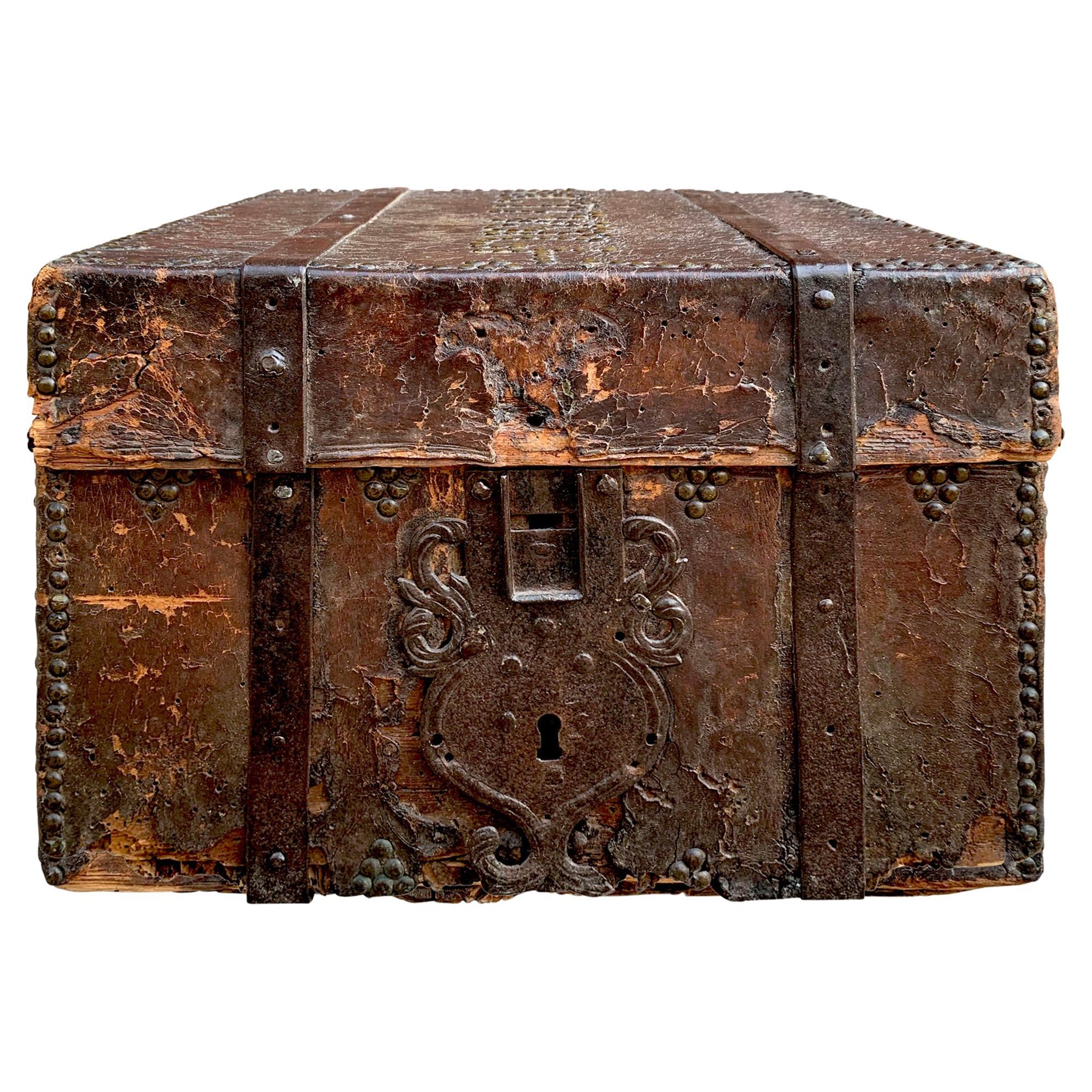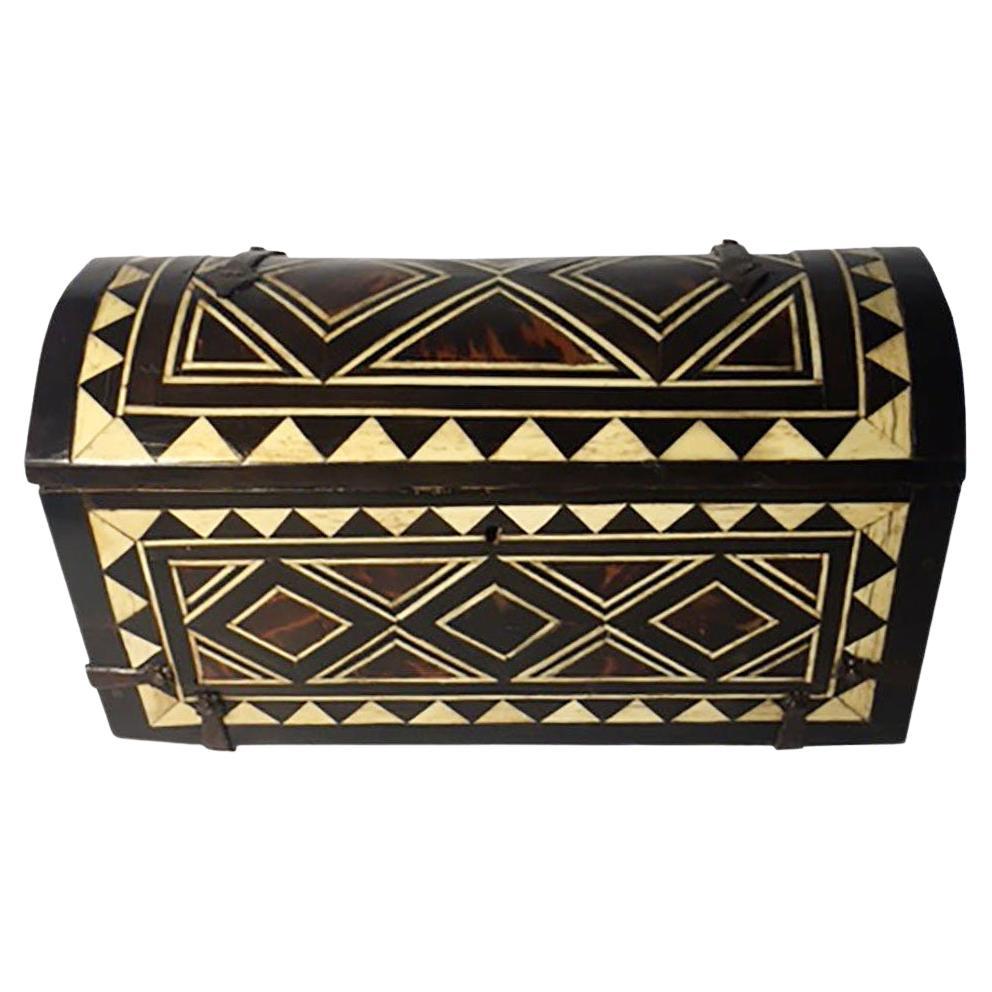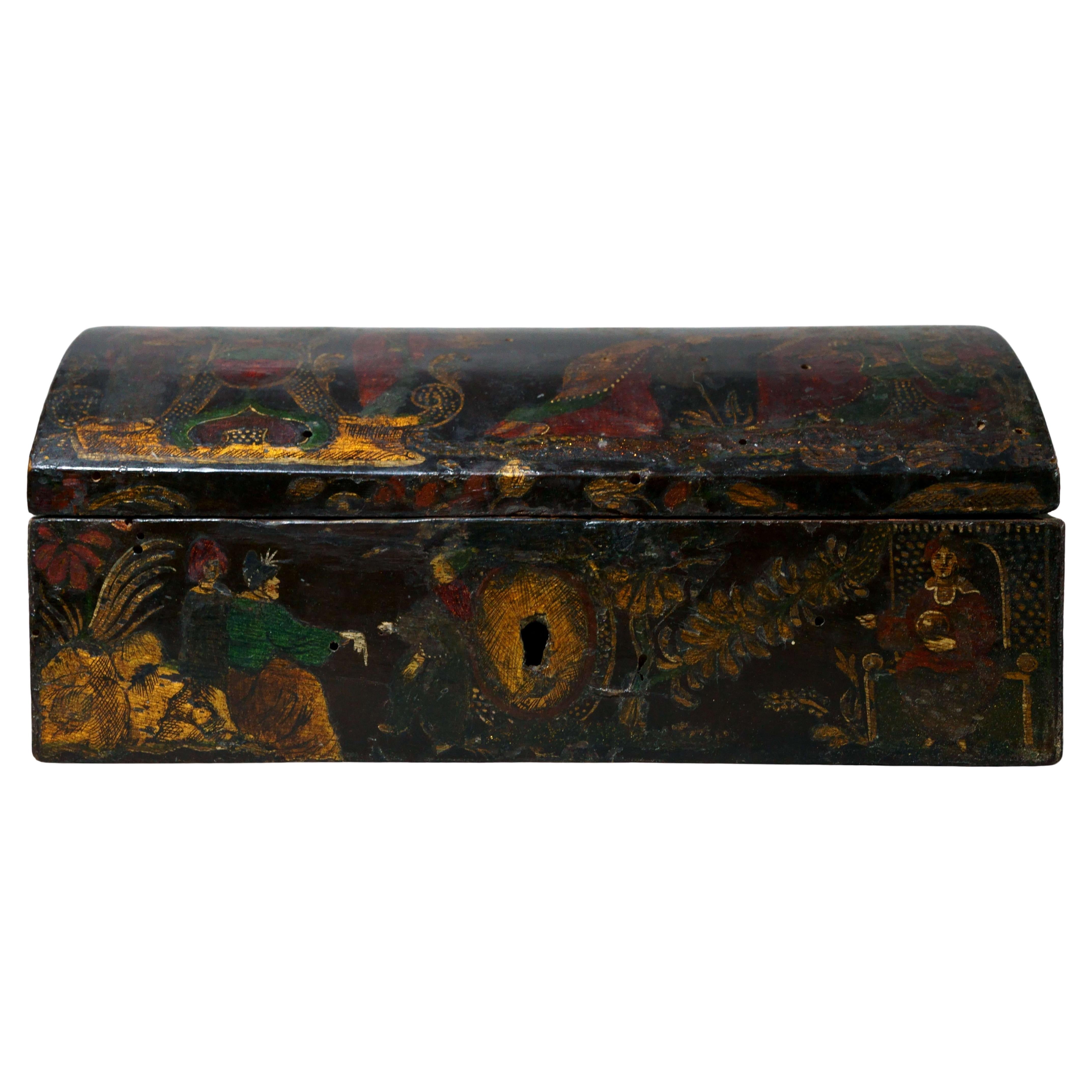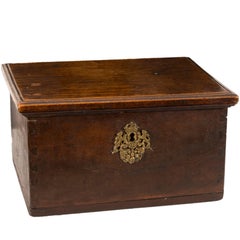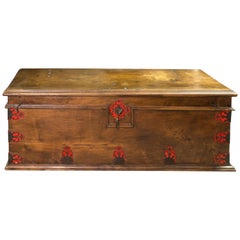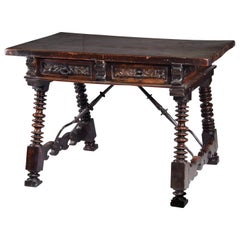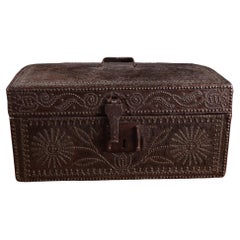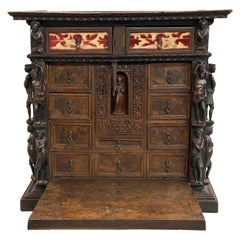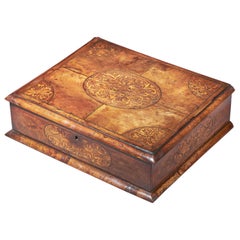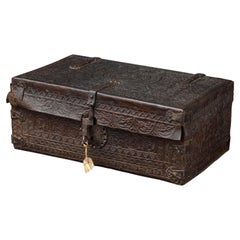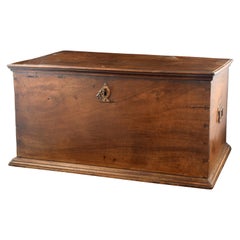
Walnut and Wrought Iron Chest, Spain, 17th Century
View Similar Items
Want more images or videos?
Request additional images or videos from the seller
1 of 6
Walnut and Wrought Iron Chest, Spain, 17th Century
$961.14List Price
About the Item
- Dimensions:Height: 24.41 in (62 cm)Width: 23.63 in (60 cm)Depth: 13.39 in (34 cm)
- Style:Baroque (Of the Period)
- Materials and Techniques:
- Place of Origin:
- Period:
- Date of Manufacture:17th Century
- Condition:Wear consistent with age and use. Minor losses. Minor fading.
- Seller Location:Madrid, ES
- Reference Number:Seller: ZF03121stDibs: LU2951317108162
About the Seller
4.9
Vetted Professional Seller
Every seller passes strict standards for authenticity and reliability
Established in 1985
1stDibs seller since 2017
343 sales on 1stDibs
Typical response time: 18 hours
Authenticity Guarantee
In the unlikely event there’s an issue with an item’s authenticity, contact us within 1 year for a full refund. DetailsMoney-Back Guarantee
If your item is not as described, is damaged in transit, or does not arrive, contact us within 7 days for a full refund. Details24-Hour Cancellation
You have a 24-hour grace period in which to reconsider your purchase, with no questions asked.Vetted Professional Sellers
Our world-class sellers must adhere to strict standards for service and quality, maintaining the integrity of our listings.Price-Match Guarantee
If you find that a seller listed the same item for a lower price elsewhere, we’ll match it.Trusted Global Delivery
Our best-in-class carrier network provides specialized shipping options worldwide, including custom delivery.More From This Seller
View AllWalnut and Metal Small Chest, 17th Century
Located in Madrid, ES
Small rectangular ark with a flat lid, with a lock of golden metal worked (crown on two facing lions, located on a garland of great size, and all around a symmetrical composition wit...
Category
Antique 17th Century European Baroque Jewelry Boxes
Materials
Metal
Castillian Chest, Walnut, Textile, Wrought Iron, Spain, 17th Century
Located in Madrid, ES
The different pieces of ironwork follow a tradition that is already in arks at the end of the 16th century (compare the example shown with the Gothic chest from the 15th century of t...
Category
Antique 17th Century Spanish Baroque Blanket Chests
Materials
Wrought Iron
Castillian Chest, Walnut and Wrought and Polychromed Iron, Spain, 17th Century
Located in Madrid, ES
Castilian chest. Walnut wood, wrought iron andpolychrome. Spain, 17th century.
Rectangular chest with a flat top, slightly raised onspheres, decorated on the outside with smoothmol...
Category
Antique 17th Century Spanish Baroque Blanket Chests
Materials
Other, Wrought Iron
Table, Walnut, Wrought Iron, Spain, 17th Century
Located in Madrid, ES
table with hairpin clips. Walnut wood, wrought iron. Spain, 17th century.
table made of carved and turned walnut wood with four A-legs, two wrought iron hairpin clips and drawers on...
Category
Antique 17th Century Spanish Baroque Tables
Materials
Wrought Iron, Other
"City Hall" Chest, Walnut, Wrought Iron, Castile Spain, 17th Century
Located in Madrid, ES
This type of "City Council" or "Council" is called by its three locks, each of which closes with its respective key. These furniture were used in any type of organization, religious ...
Category
Antique 17th Century Spanish Baroque Blanket Chests
Materials
Wrought Iron
Chest, Walnut, Textile, Wrought Iron, 17th Century
Located in Madrid, ES
The shape of this chest, rectangular with flat top, is also the usual in this type of furniture since the Gothic in the Spanish school. It is necessary to highlight the importance that the typology has on Spanish Antique furniture...
Category
Antique 17th Century Spanish Baroque Blanket Chests
Materials
Wrought Iron
You May Also Like
17th century leather studded travellers Chest
Located in London, by appointment only
A large French 16th Century Beech wood & leather chest, with iron flowerhead and domed stud work to front top and sides. Original hasp and lockplate, the interior of the box with lat...
Category
Antique Early 17th Century French Baroque Decorative Boxes
Materials
Leather
17th Century Spanish Burled Walnut Vargueno or Collectors Cabinet
Located in Milford, NH
A fine example of a diminutive burled walnut vargueno, collector or valuables cabinet, with molded cornice and drop front, opening to a multi-drawer ...
Category
Antique 17th Century Spanish Moorish Cabinets
Materials
Brass, Wrought Iron
17th Century Figured Walnut and Seaweed Marquetry Lace Box
Located in Oxfordshire, United Kingdom
A fine and extremely rare figured walnut and seaweed marquetry 'lace box', circa.... let’s break it down - Seaweed marquetry first appeared in Englis...
Category
Antique 17th Century English Baroque Decorative Boxes
Materials
Walnut
Boiled Leather Trunk, Spanish, 17th Century
Located in Bruxelles, BE
Leather trunk
Spanish, 17th century
Boiled Leather, wood and iron
Measures: 22 x 53 x 32 cm.
Provenance :
- collection Metz-Noblat, Château de Clevant, France
Rectangular trunk of the form and size of a small suitcase with wrought iron hinges and lock-plate.
Wood, covered with leather, cut and embossed with every surface of the thick cow hide covered in interlace, zoomorphic features.
The construction method is boiled leather, often referred to by its French translation cuir-bouilli: a process used to change flexible, vegetable-tanned leather into rigid, moulded objects. For shaping of the vegetable-tanned leather, heat and moisture were used, as indicated by the term boiled leather. No written medieval sources describing the production of decorated cuir bouilli objects survive, so knowledge of the process relies on the important studies of the Scottish leather historian John William Waterer. A large range of methods, materials and techniques could be used in various combinations. The vegetable-tanned leather, made supple with moisture and heat, was stuffed, shaped and nailed to the rigid wooden coffer support. The stuffing material was probably modeled beeswax or stearin wax. To shape the leather, to create its topography, « Cushions » were made by lacing a thread through an awl hole and attaching the flexible leather and stuffing to the rigid wooden support on the bottom. Then the decoration was done: lines were incised through the upper layer of the leather (epidermis) with different thicknesses of knives or needles. Contours were created with deep v-shaped cuts, decoration with thin incision and final details with a needle point. For the incision and pouncing stage, the leather was probably kept heated and moistened for suppleness.
Once dry, the leather would be hard and rigid.
the saturated leather is worked over a form, possibly even damp sand, with the pattern shaped using bone or wooden tools. Compare to metal, leather was lighter and it offered protection from cuts and punctures. Cuir bouilli objects were produced by specialist leather workers and needed skillful craftsmanship.
The surface is filled with roundels shaped foliages enclosing animals, lions and peacocks. The foliate arabesques creating a vegetal connection tweet the animals create the impression of a lush verdant space . The vegetal pattern here employed in combination with geometrical pattern came from the pre-islamic artistic traditions of the Byzantine and Sasanian empires. An aspect of Islamic geometry Is the basic symmetrical repetition and mirroring of the shapes that create a sense of harmony.
The decoration of this truck is inspired by the islamic « arabesque » a form of vegetal ornament composed of spirals, intertwining plants and abstract curvilinear motifs. An arabesque character is given to the birds of the decorations through extreme stylisation. This arabesque maintained the classical tradition of median symmetry, freedom in Detail and heterogeneity of ornament.
The presence of the peacocks is a paradisiacal allusion: in popular Islamic literature they were among the original inhabitants of the garden of Paradise expelled with Adam and Eve. Peacock as a decorative motif may have originated in the West, despite their eastern provenance. There was an ancient belief that the flesh and feathers of peacock do not decay. This led to the peacock becoming a christian symbol for Christ’s resurrection.
Renowned for their decorative wall hangings, seventeenth-century Spanish leatherworkers also produced utilitarian objects, such as this trunk. A similar trunk is on display at the Metropolitan museum of art ( 09.158.1).
Related literature :
Davies L. 2006. Cuir bouilli. Conservation of leather and related materials, 94-102, Oxford: elsevier Butterworth-Heinemann
Grabar, Oleg. The Mediation of Ornament. Princeton: Princeton University Press, 1992
Gabriela Germana Roquez, "El mueble en el Peru en el siglo XVIII...
Category
Antique 17th Century Decorative Boxes
Materials
Iron
COUNTER CASH 17th Century Flemish
Located in Madrid, ES
COUNTER CASH
17th Century Flemish
in walnut wood with inlays, consisting of two drawers and a drawer.
Signs of use.
Dim.: 31.5 x 44 x 27 cm
good state
Category
Antique 17th Century Dutch Baroque Decorative Boxes
Materials
Wood
A Fine of a 17th Century Painted Armada Chest
Located in Lincolnshire, GB
A 17th century painted Armada chest with a finely engraved steel lock plate with Maidens, flowers, and a brass central boss.
The outside is painted with a green background and floral...
Category
Antique 17th Century European Decorative Boxes
Materials
Brass, Steel
